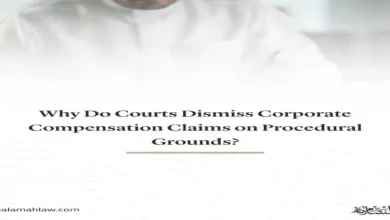How Did an Investor Avoid Paying 1.8 Million SAR in White Land Fees
The Facts: A Plot, a Project, and an Unexpected Fee!
In the heart of Jeddah, an investor owned a large commercial plot of land. It wasn’t just an empty lot it represented the foundation for an ambitious commercial project.
The owner had already begun the development process and submitted all required applications to the Jeddah Municipality to obtain the necessary permits and approvals.
However, while the project was in progress, the investor was surprised by a Ministry of Housing decision imposing a 1.8 million SAR White Land Fee on his property.
The owner was stunned how could such a fee be imposed on commercial land, not residential, and on land already being developed?
The Arguments: Each Side Standing Its Ground
The plaintiff (landowner) did not give up. He filed a formal objection before the competent committee, and after it was rejected, he took his case to the Administrative Court, seeking to cancel the Ministry of Housing’s decision.
His arguments were clear and legally grounded:
The land is commercial, not residential.
Therefore, it should not fall within the scope of the White Land Fees System, which targets residential or mixed-use residential lands.
The land is not vacant.
The plaintiff had already begun developing it and had a valid building permit issued on 29/11/1438 AH, months before the Ministry imposed the fee on 21/7/1439 AH.
The fee should not apply to land under development.
The purpose of the fee is to encourage development, not penalize those actively developing their land.
On the other hand, the Ministry of Housing strongly defended its decision, arguing that:
Ongoing development or the process of obtaining permits does not prevent the imposition of the fee.
The fact that permits are being processed does not constitute an obstacle under the regulations.
The decisive factor lies in meeting the criteria of Article 8 of the Executive Regulations, which define eligible lands as:
Vacant lands;
Located within the urban boundary;
Designated for residential or residential-commercial use;
Falling under the category subject to the fee.
The Ministry maintained that the plaintiff’s land met all these criteria, and that having a building permit did not change its classification as “vacant.”
The Court’s Judgment: A Victory for the Investor!
The court ruled in favor of the plaintiff, cancelling the imposed fee of 1.8 million SAR.
The ruling was later upheld by the Court of Appeal, making it final and binding.
The Court’s Reasoning: A Precise Legal Interpretation
The Court’s Reasoning: A Precise Legal Interpretation
The commercial building permit was issued on 29/11/1438 AH, whereas the Ministry’s fee decision came later, on 21/7/1439 AH after the permit was granted.
The court referred to Article 1 of the (old) Executive Regulations, which defined a “developed land” as:
“A vacant land whose subdivision plan has been finally approved by the competent authority.”
The court explained that at the first stage, the goal is to prepare land for construction by establishing infrastructure or obtaining final planning approval — actual construction is not required.
The court held that the issuance of a building permit proves the land is ready for construction, and such a permit has the same legal effect as final planning approval since it follows comprehensive procedural reviews and technical requirements that demonstrate the owner’s genuine intent to develop.
The court also relied on a statement from the Deputy Mayor for Urban Development in Jeddah, confirming that land development can occur through:
A subdivision plan, or
The issuance of a building permit covering the entire site for an integrated project.
Hence, a building permit is indeed evidence of development.
The court found that the Ministry imposed the fee on the entire property without excluding the portion covered by the commercial building permit, which was legally incorrect.
Based on these findings, the court ruled that the Ministry’s decision to impose the fee was unlawful and must be revoked.
Legal Principle: A Building Permit Is Proof of Development
This ruling confirms that the issuance of a building permit, even for commercial use, is strong evidence that the land is not “vacant” within the meaning of the White Land Fees Regulations.
Preparing land for construction through official permits and development procedures removes it from the category of “white lands,” as it demonstrates the owner’s clear intent to develop rather than leaving the land idle.
Al Salamah Law Firm’s Opinion
Although the White Land Fees System and its Executive Regulations have recently been amended, the essence of Article 8 outlining the conditions of applicable lands remains unchanged. It has merely been renumbered as Article 7 in the new regulations.
Therefore, the legal principle upheld in this case remains valid and enforceable, and it can still be invoked in similar future disputes.
Building permits and official approvals are conclusive evidence of a land’s status and the owner’s intent to develop. They should always be retained and presented when needed.
Property owners and investors are advised to closely monitor any decisions affecting their assets.
If you wish to file a formal legal objection, Al Salamah Law Firm is ready to support and represent you.


